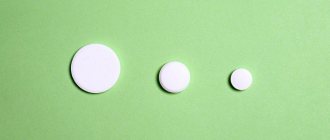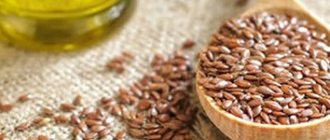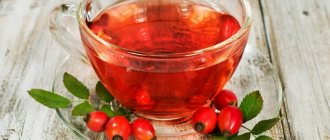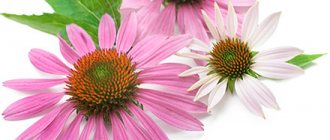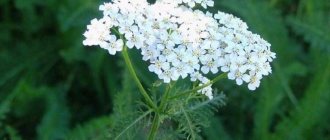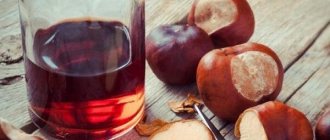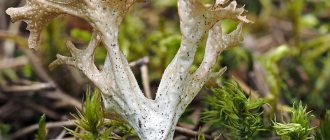Photo pixabay.com
My grandmother treated the same diseases with different herbs. She advised one person to drink one herb, another another. Grandma rarely made a mistake with her choice of herbs. Doing this on your own is much more difficult. But there are many plants that treat a huge number of diseases, and in treatment they have a great positive effect.
Among them is yarrow. This plant has many healing properties that cannot be listed so easily. Thanks to the content of resins and silicon, it restores tissue after operations, burns, and wounds. It is used as a hemostatic agent for internal and external bleeding, diseases of the gastrointestinal tract, for inflammatory processes in the uterus, and also as a diaphoretic, choleretic, diuretic, antiseptic and appetite improver. It was for the ability of the plant to treat a huge number of diseases that my grandmother called yarrow a thousand lives.
Photo pixabay.com
Metrorrhagia
Metrorrhagia is uterine bleeding that is not associated with the menstrual cycle.
Occurs with uterine cancer, uterine fibroids and other diseases. An infusion is prepared for treatment. Two tablespoons of dry crushed yarrow herb are poured into one liter of boiling water, left for three hours and filtered. Take one tablespoon of infusion three times a day until improvement. When treating uterine bleeding with yarrow, women need to be very careful, otherwise after treatment the menstrual cycle will take a long time to recover, or rather, it simply will not exist.
ACHILLEA MILLEFOLIUM L.
Sem. asteraceae (compositae) - Asteraceae (Compositae)
DESCRIPTION. A perennial herbaceous plant 20-50 (80) cm high, with a creeping branched rhizome that produces underground shoots. Stems are few, erect, usually branched only in inflorescence. The leaves are green or gray-green, lanceolate in outline, pinnately dissected, with few, widely spaced (up to 10 mm) segments, which are repeatedly dissected into 3-5 pairs of toothed lobes. The lower leaves are petiolate and large; middle and upper ones are smaller, sessile. Inflorescences are baskets collected at the top of the stem into a shield. They are small, oblong-ovate (outside covered with an involucre of imbricated, elongated, greenish, membranous leaves at the edges) with 5-7 marginal ligulate pistillate flowers and several middle tubular, bisexual flowers. The corolla of reed flowers is white, less often pink. The fruits are small silver-gray achenes. Blooms from June to September; the achenes ripen in August.
RAW MATERIALS. Medicinal raw materials are inflorescences with apical leaves and a stem no longer than 15 cm, as well as individual leaves and baskets. The smell is peculiar, aromatic; the taste is salty-bitter. The procurement of raw materials is carried out at the beginning and middle of flowering. Dry the raw materials in the shade in the air, in well-ventilated areas or dryers at a temperature of 40-50°C.
In accordance with the requirements of the standard, in dried yarrow grass, moisture is allowed no more than 13%, total ash no more than 15%, stems no more than 30%; raw materials that have changed their color, no more than 3%; foreign organic impurities no more than 0.5%, mineral impurities no more than 1%.
SPREADING. It is found abundantly in forest-steppe and steppe zones. Grows in dry steppe meadows, wastelands, fallow lands along roadsides, boundaries and edges of fields.
CHEMICAL COMPOSITION. The leaves contain vitamin K, 0.05% methyl betaine (achillein), about 0.8% essential oil, which includes: proazulene, d-alpha-pinene, beta-pinene, 1-camphor, 1-borneol, thujone, cineole , acetic, formic and isovaleric acid, esters and alcohols, vitamins C and K.
The sesquiterpene lactones matricin, millefolide, balchanolide, balchanolide acetate, and the flavonoid luteolin-7-glycoside were isolated from the inflorescences.
APPLICATION. Yarrow herb has hemostatic, anti-inflammatory and wound-healing properties, and increases bile secretion. As a hemostatic agent, yarrow is used for internal (intestinal, pulmonary, hemorrhoidal, uterine, etc.) and external bleeding (nose, dental, wound).
Its preparations are also used for various diseases of the gastrointestinal tract, in particular for peptic ulcers, gastritis and colitis.
In folk medicine, decoctions, tinctures, infusions, ointments based on yarrow herb are used as a hemostatic, choleretic, anthelmintic, anti-inflammatory, expectorant, for stomach colic, dyspepsia, diarrhea, hyperacidity, bronchial inflammation, impaired menstrual cycle, liver and biliary diseases ways, bedwetting, headache, lack of appetite (orally), externally - for the treatment of wounds, pustular skin lesions (compresses), hemorrhoids (baths), stomatitis and inflammation of the gums (by rinsing the mouth area).
RECIPES
Infusion:
Pour 2 teaspoons of crushed raw materials into a glass of boiling water, leave for an hour, strain; drink in several doses in one day. An infusion prepared from 10 g of yarrow herb per glass of water is recommended (3-4 tablespoons before meals) for gastritis with low acidity; as a hemostatic agent, an infusion of yarrow herb (this requires 15 g per 200 g of water) should be consumed in a tablespoon 3 times a day.
Decoction:
15 g of raw materials per glass of water; take 1 tbsp. spoon 3 times a day. You can also drink a glass of tea 2 times a day.
Fresh Juice
drink 2 teaspoons with honey in the morning and evening, washed down with warm water.
Ointment
(in winter): thoroughly mix 1 teaspoon of tincture and 4 teaspoons of Vaseline, and in summer it is better to use 2 tbsp. Crush tablespoons of crushed leaves until smooth and mix in half with rendered unsalted pork fat.
Yarrow herb is a constituent of mouth-watering gastric and anti-hemorrhoid preparations for the treatment of pulmonary tuberculosis.
Long-term use and large doses cause dizziness and skin rashes.
Juice from fresh leaves
take 1 teaspoon with honey 3 times a day to improve appetite, metabolism, and liver diseases.
Mixture:
Yarrow juice and rue juice, take 24 drops of each with water 2 times a day for palpitations.
Infusion:
a) 30 g of leaves and flower, pour 1 liter of boiling water, leave for 30 minutes. Take 1 glass 3-4 times a day for hemoptysis, uterine bleeding, hemorrhoids, boils;
b) 1 tbsp. Pour 1 cup of boiling water over a spoonful of dry herbs, leave for 1 hour in a closed container, strain. Take 1 tbsp. spoon 3-4 times a day before meals for hypoacid gastritis.
Powder:
Mix 0.15 g of yarrow leaf powder and 0.15 g of nettle leaves. Take 1 powder 3 times a day before meals as a hemostatic and anti-inflammatory agent.
Tea:
Pour boiling water over the flower top and leave for 5 minutes. Drink with honey in the morning, on an empty stomach, for pain in the liver area.
USE IN NUTRITION
Yarrow sprigs are used for salting and marinating cucumbers, eggplants, zucchini, squash, mushrooms, and also for brewing tea.
Choice of alcohol base
Yarrow tincture is prepared with alcohol, vodka, and moonshine. It is important to choose a high-quality base; the action and safety of the product depends on it.
Moonshine
Moonshine is close in strength to vodka, so often it does not even need to be diluted to prepare medicine. Only use purified product. Moonshine should be transparent, without sediment or strong odor. In its preparation, the quality of raw materials, equipment, and adherence to the recipe are important.
Vodka
More often, vodka is used to prepare healing compositions - an affordable product. You need to take good raw materials. This is evidenced by the following signs of quality :
- transparency;
- absence of sediment, impurities;
- soft taste;
- stamp with the date of bottling;
- a spiral of small bubbles when shaken;
- when ignited, a weak blue flame;
- tight cap;
- maintaining transparency when adding sulfuric acid (1:1).
Alcohol
To prepare medicinal formulations, it is better to use medical alcohol, since the requirements for it are increased. The concentration varies, reaching 95%. Dilute with water in a ratio of 2:3 to the required level.
Medical alcohol is not available to everyone, so it is usually used as a food product. The degree of purification is important . It is highest for drinking ethyl alcohol. A rectified product is also suitable.
Industrial alcohol is not suitable for preparing medicinal tinctures. Wood, cellulose or oil are used to make it. This is dangerous to health, fraught with poisoning and death.
Advantages and disadvantages
Yarrow has long been known for its healing properties and is even officially recognized as a medicinal raw material in Russia and other countries. The advantages of the tincture from this plant are:
- no heat treatment, which preserves more benefits;
- long-term storage;
- better dissolution of chemical elements;
- fast absorption;
- antiseptic effect;
- convenient form of administration - the dosage is minimal, several times less compared to some dosage forms;
- compactness of the medicine - you can take the bottle with you, it takes up little space;
- possibility of self-cooking, adding other ingredients.
Minuses:
- presence of alcohol in the composition;
- the product must be infused for several days or weeks;
- there are contraindications;
- side effects;
- risk of poisoning in case of overdose.
Contraindications
Yarrow tincture is not suitable for everyone. Contraindications to its use are as follows :
individual intolerance;- children under 6 years of age;
- pregnancy;
- breast-feeding;
- increased blood clotting;
- tendency to thrombosis;
- gastritis with high acidity;
- gastrointestinal ulcer.
When and how to harvest yarrow
Yarrow inflorescences and grass have beneficial properties. They are harvested from the beginning of flowering in June to August. To do this, you need to cut off the tops with inflorescences at a distance of 15 cm from the top. When flowers are harvested, they are cut to a length of 4 cm. This way we will obtain beneficial properties and will not harm nature.
Yarrow should be dried in a well-ventilated area. The raw material has a tart, peculiar odor. The shelf life of dried yarrow is 2 years.
Yarrow for hair
Fragility, graying of hair, dryness, keratinization and flaking of the scalp indicate that the body is sorely lacking vitamin A. The use of yarrow has an excellent effect on dry skin and hair. The plant extract strengthens hair well and gives it shine.
Recipe for improving hair growth. It is recommended to pour 10 g of finely chopped dried flowers of the plant into 250 ml of boiling water. You need to infuse the product for 1 hour so that the infusion does not cool completely; a thermos is best. Then the composition must be filtered and 2 tablespoons poured. The infusion should be rubbed into the roots of the hair, and the rest should be moistened with the hair an hour before washing your hair, then wash your hair with shampoo. The remaining broth should be added to water for rinsing hair: 2 tablespoons per 1 liter of water.
Medicinal properties of yarrow
In the chemical composition of Achilles herb we will find essential oil rich in homazulene, the alkaloid achillein, esters, camphor, flavonoid glycosides, tannins, carotene, vitamins K, C, organic acids, amino acids, as well as minerals - magnesium, potassium, boron, zinc , selenium, molybdenum, copper, calcium.
Due to the presence of essential compounds and flavonoids, yarrow has an antispasmodic effect on the smooth muscle tissue of the biliary tract, intestines and urinary tract. The excretion of bile into the duodenum increases, and the pain caused by intestinal spasm is relieved. An excellent herb for those who have problems with bile excretion and spasms in the gastrointestinal tract.
Yarrow relieves inflammation in the sphincter of Oddi, relieves bloating, and improves digestion. For pancreatitis, yarrow is extremely effective when mixed with St. John's wort in equal parts.
Bitter achillein of yarrow activates the secretion of gastric juice. This is great news for those who have low stomach acidity and suffer from inflammation - hypoacid gastritis.
Yarrow quickly stops bleeding both when applied topically and when used systemically in the form of preparations. But at the same time - which is very important for those who have thick blood - it does not cause blood clots. Therefore, it is not contraindicated for thrombophlebitis, heart attack and stroke. Yarrow has antiallergic, bactericidal, and anti-inflammatory effects. May have a sedative (calming) and hypotensive effect.
It is important to note that the plant is moderately poisonous. In case of overdose, it may cause hallucinations.
Indications for use of yarrow
The beneficial properties of yarrow are such that they allow us to use its natural chemical composition for the following diseases and symptoms:
- bleeding
- peptic ulcer of the stomach and duodenum
- cholecystitis
- hepatitis
- pancreatitis
- intestinal diseases
- in complex therapy of the urinary tract, atherosclerosis
- externally in the treatment of wounds, eczema, burns, diathesis, acne, furunculosis, in the treatment of alopecia
- inflammation of the throat, gums.
Plant characteristics
What beneficial properties does yarrow have ? First, let's figure out what kind of plant this is. The erect stems of yarrow grow up to 80 cm in height. The dark green leaves are petiolate at the bottom and sessile at the top. The roots of the plant are creeping and quite thin. Small flowers are collected in large basket inflorescences. Yarrow blooms all summer until the first frost in the fall. The seeds ripen a month after flowering.
The drought-resistant and hardy plant prefers bright sunny meadows. It grows a lot along roadsides, in gardens and parks. Used as a medicinal, spicy and honey plant. Yarrow is well known to traditional healers. Traditional medicine also uses preparations from this plant.
Yarrow beneficial properties
Benefits and harms
The beneficial properties of the product are expressed in the following effects:
- hemostatic;
- anti-inflammatory;
- astringent;
- bactericidal;
- wound healing;
- anesthetic;
- choleretic;
- antiallergic.
Yarrow tincture can also be harmful. Due to the choleretic effect, there is a risk of stone movement and blockage of the duct. This can aggravate cholecystitis.
When taking it, be sure to strictly follow the dosage. Exceeding it is :
- allergic reaction;
- poisoning;
- menstrual irregularities;
- dizziness;
- decreased blood pressure;
- gastrointestinal disorders;
- exacerbation of chronic diseases.
Chemical composition
The herb of the plant contains essential oil (from 0.25–0.8% to 1.4%). Its amount varies depending on the growing season: during the flowering of yarrow, the content of essential oil increases.
The essential oil contains monoterpenoids (tujol, pinene, camphor, cineole, borneol) and sesquiterpenoids (acetylbalquinolide, proazulene, achillenum, caryophyllene).
The following substances are also found in yarrow herb: flavonoids, alkaloids, tannins, esters, stachydrine, choline, acetic, isovaleric and formic acids, ascorbic acid, vitamins A and K.
Recipe
Preparation of yarrow tincture involves long-term exposure of raw materials in a dark and warm place . The optimal temperature is 20-24°C.
For preparation, it is best to take glassware - a jar or bottle. Take the lid (cork) from the same material, nylon or plastic. It is better to use dishes made of dark glass. For storage, you can choose a smaller container - after filtering, the volume will decrease.
On vodka
To prepare yarrow tincture with vodka you need :
- 30 g of dry vegetable raw materials;
- 0.1 l of vodka.
Dry yarrow is crushed, poured into a suitable container and filled with vodka.
You need to infuse the product for 2 weeks, shaking daily. The finished composition is filtered.
On moonshine
Yarrow tincture on moonshine is prepared according to the same recipe as the vodka solution. If the alcohol base is too strong, it is diluted.
It is convenient to use the Fertman table for calculations . So, to obtain a base of 40%, add 38.4 ml of water to 0.1 liter of moonshine with a strength of 55%, 60% - 51.4 ml.
Alcohol form
A recipe with vodka is suitable for cooking with alcohol. You can immediately dilute the base to 40% strength using Fertman's table. According to it, to 0.1 liter of 95% alcohol add 144.3 liters of water, 75% - 90.6 ml.
There is another option - to use pure alcohol for preparation. Then the finished product is diluted after filtering, taking into account the final volume. In this case, the plant material is infused for less than 10 days.
What is the drug?
Yarrow tincture is a liquid dosage form . Parts of the plant are crushed and filled with an alcohol base of a certain concentration. The product is infused in a dark and warm place and filtered.
Difference from infusion, decoction, extract
The alcohol base makes the tincture and extract similar.
The latter is a concentrated extract from plant materials. Prepare the extract immediately, without keeping it for several days. The difference from infusion and decoction lies in the peculiarities of preparation. To obtain such dosage forms, plant materials are filled with water.
In the case of decoction, heat treatment is used; the preparation process usually takes no more than an hour, not taking into account cooling.
The infusion is prepared cold, hot or mixed. Plant materials are usually filled with water for no more than half an hour, less often for several hours or a day. The tincture is kept many times longer, sometimes for a month.
An important difference between tinctures and decoctions and infusions is the shelf life. The alcohol base extends it to 1-2 years. Decoctions and infusions are stored for no longer than 2-3 days.
